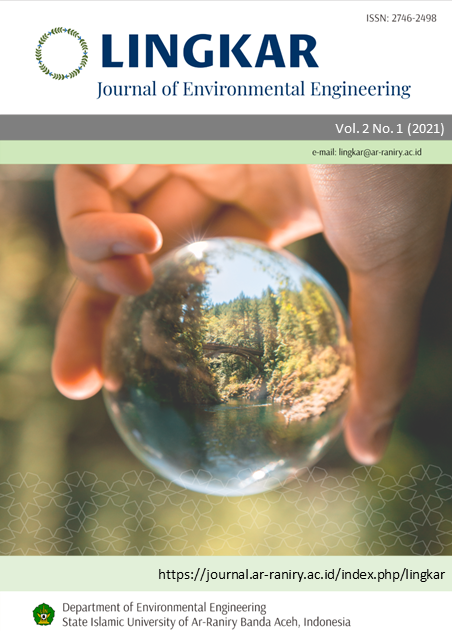PEMANFAATAN ARANG AKTIF KULIT JENGKOL (Pithecellobium lobatum) SEBAGAI ADSORBEN DALAM MENYISIHKAN KADAR COD DAN TSS PADA LIMBAH CAIR TAHU
DOI:
https://doi.org/10.22373/ljee.v2i1.1871Keywords:
Activated Charcoal, Adsorbent, Pithecellobium lobatum, Tofu Liquid WasteAbstract
Tofu liquid waste comes from the washing process, boiling, and printing on tofu production. Tofu liquid waste is usually directly discharged into rivers or sewers which can have a negative impact on the environment. Tofu wastewater treatment with activated charcoal adsorption methods can reduce the concentration of pollutants contained in the waste. This research was conducted to determine the effect of variations in stirring speed in the removal of COD and TSS levels in tofu liquid waste. The adsorbent used in this study was activated charcoal from the skin of jengkol (Pithecellobium lobatum) carbonized at 350ºC which was then activated using 1M HCL. The adsorption process in this study used a mass of 2 g of activated charcoal; 4 g, 6 g and 8 g and stirring speed 60 rpm and 120 rpm. The initial concentrations of COD and TSS were 5140 mg/L and 605 mg/L. The results of the research that have been carried out show that the stirring speed and mass of the adsorbent affect the levels of COD and TSS as well as the effectiveness and adsorption capacity. A significant decrease in COD and TSS levels occurred in the treatment using 8 g of activated charcoal and a stirring speed of 120 rpm. The COD value obtained was 1137 mg/L, TSS was 103 mg/L and the efficiency value obtained was COD of 77.88% and TSS of 82.98%.




